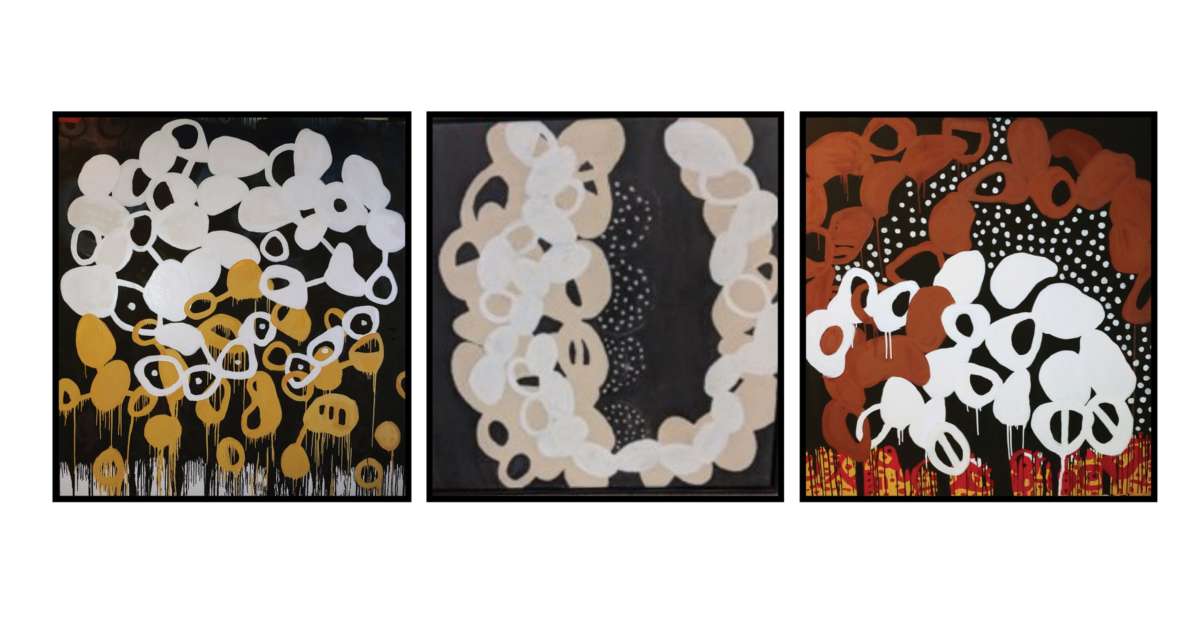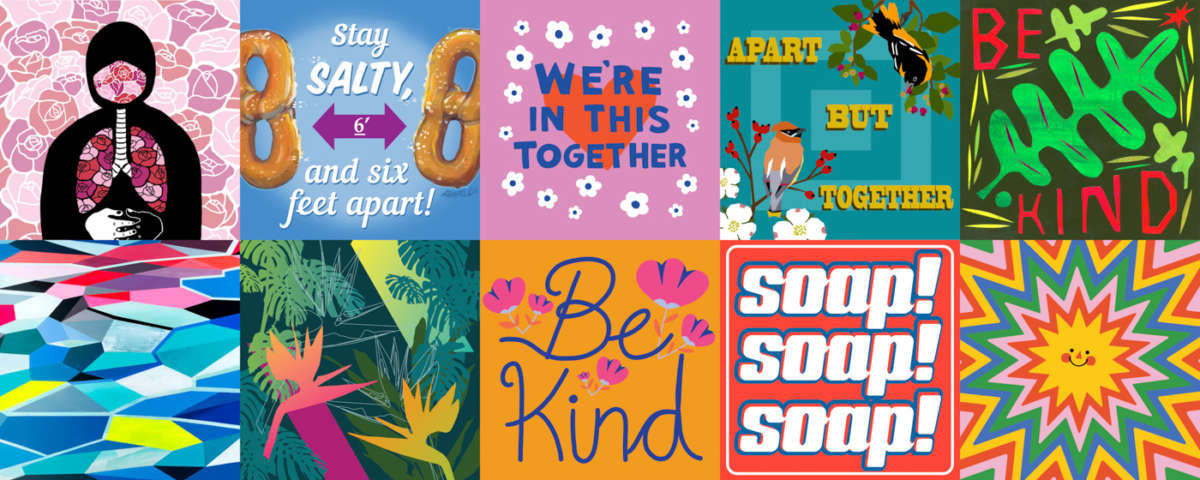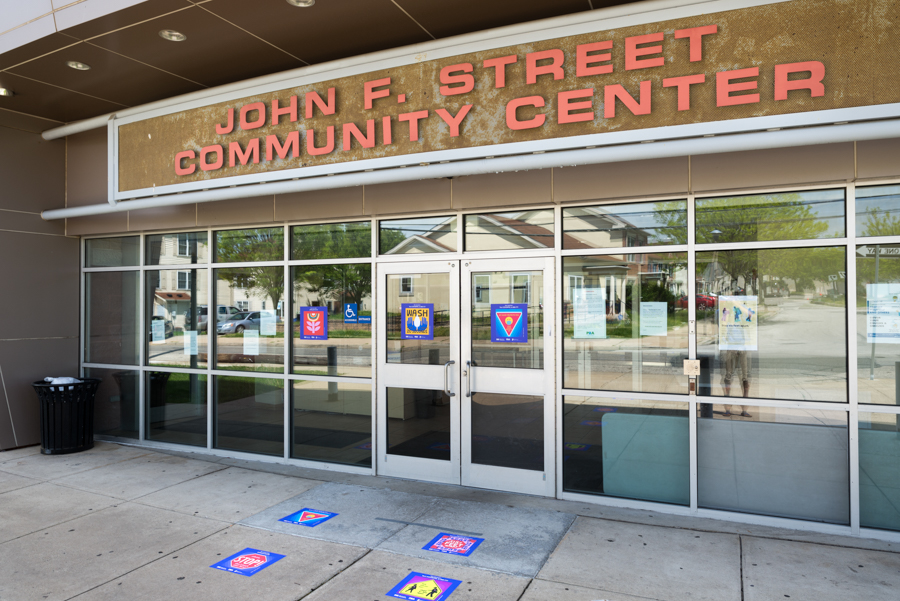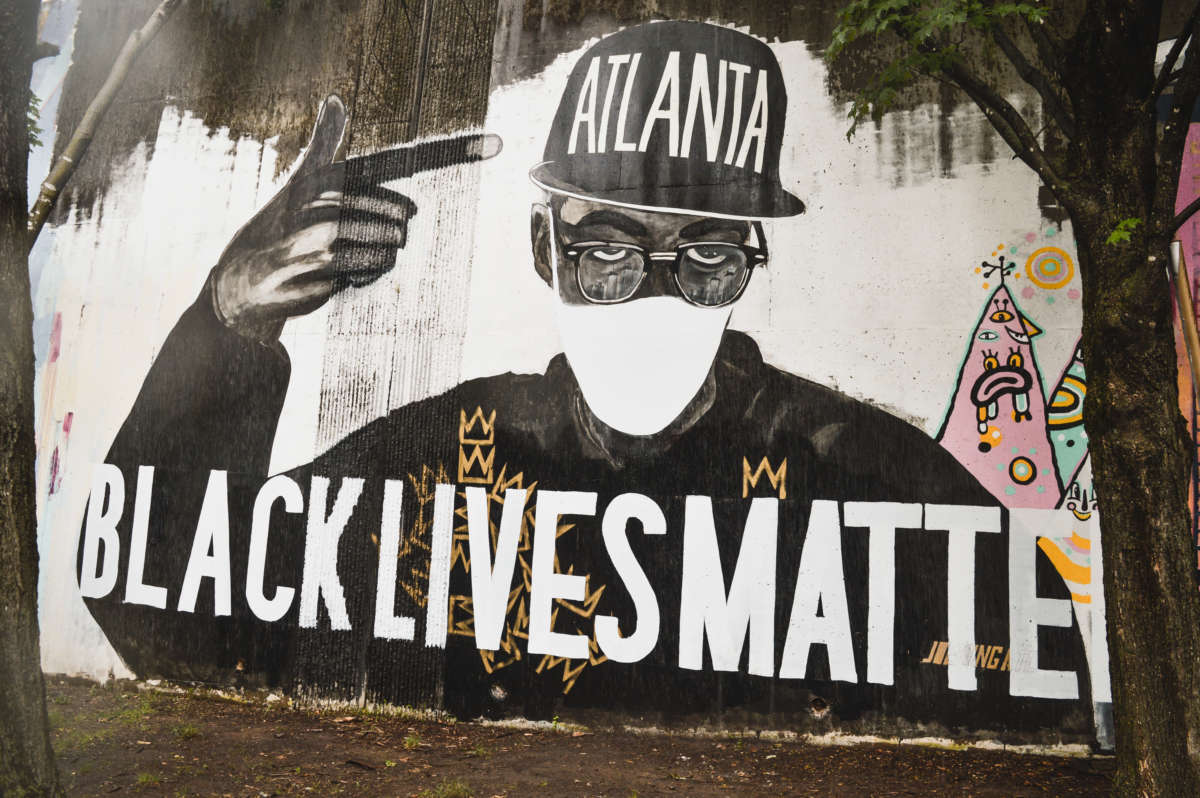Support justice-driven, accurate and transparent news — make a quick donation to Truthout today!
Almost immediately after the coronavirus began to spread throughout New York City, art historian Han Hongzheng, an immigrant from China, started seeing anti-Asian slurs on social media.
Then he experienced the hatred at close range.
“One day in early March, my partner, who is white, and I were walking our dog on the Upper West Side of Manhattan,” Hongzheng says. “All of a sudden, this guy on skates got very close to us and screamed the word ‘traitor’ at my partner.”
Hongzheng describes the incident as both frightening and hurtful, but says that he decided, almost immediately, to pull together an artistic response to the xenophobia he’d witnessed.
Together with his friend, curator Chandler Allen, they began reaching out to artists of Asian descent, some of them well-established and others just starting out. The result, Within Global Isolation: Asian Artists in America, brought 10 artists together in a virtual exhibition that combines imagery with artist interviews.
“Essentially, we wanted to focus on the idea that xenophobia is not new,” Allen told Truthout. “A lot of artists have been making art about racial dynamics, immigration and xenophobia for decades. Our goal was to publish work that had been completed prior to the pandemic but that deals with issues that can be recontextualized due to COVID, making it relevant to this moment.”
Indeed, as the pandemic enters its sixth month, artists throughout the U.S. are finding ways to document the moment, creating murals, sculptures, puppetry, as well as oil, acrylic and watercolor paintings to express a range of emotions — from condemnation of racism and racial disparities in health care access, to memorials to the dead. In addition, some works honor medical professionals, delivery people, store clerks and agricultural workers, while other images are meant to boost morale and lift spirits.

Honoring Essential Workers
Several months ago, Austin Zucchini-Fowler got permission to paint a wall in the River North Arts District in Denver, Colorado. His first mural depicted a nurse with angel wings, her hands covered by boxing gloves.
His goal, Zucchini-Fowler says, was to “pay gratitude to the health professionals battling the pandemic.” The community response was so positive that he has since painted eight additional murals honoring workers who’ve put their lives on the line. “Everyone appreciates being recognized,” he told Truthout.
Muralists in Atlanta, Georgia, have taken a different tack, focusing attention on the Black community. The new grassroots arts-based, multimedia campaign Big Facts, Small Acts, underscores the message, noting that African Americans make up 30 percent of COVID-19 cases despite being only 13 percent of the U.S. population.
What’s more, African Americans are less likely to have health insurance and more likely to suffer from underlying health concerns including diabetes, heart disease and hypertension. These facts led Big Facts, Small Acts to come up with an artistic response to promote mask wearing, social distancing and getting tested for the virus.
But rather than creating something new, affiliated artists opted to put removable vinyl masks over the mouths and noses of Colin Kaepernick, Martin Luther King Jr., Bob Marley, and other luminaries who are depicted in murals located throughout Atlanta.
The organization also sells masks with pointed messages: “Just Trying to Stay Alive While Black” and “Mask-Up, Don’t Shut Up” among them.
“This is Georgia, where mask-wearing is contentious, but I wanted to say, ‘Put a mask on and keep it on,’” Big Facts muralist Dwayne “Dubelyoo” Wright told Truthout. “The goal is to cover our vulnerable Black and Brown communities with messages for us, by us. There’s a lot to protect right now and it starts with community health.”
Joe Dreher, aka JOEKINGATL, says that he contacted Big Facts because he wanted to do “something impactful.” About six years ago, he took a photo of a young Black man named Brian who worked in a gas station in his Cabbagetown neighborhood. “One day he had this hat on, with the word Atlanta on it,” Dreher recalls. “I asked to take his picture. When I looked at the photo later, I realized that it said a lot about the mood of the city, Yes, there is a lot of hope and pride here, but there is also a lot of frustration.”
There is a huge disparity between rich and poor in the city, and homelessness is a big issue, he continues. “I hear again and again that Atlanta is having a renaissance but we haven’t made it a reality,” Dreher said. “I made a mural of that photo which Brian told me made him feel immortalized.”
Dreher recently added the words Black Lives Matter to the mural — with Brian’s consent. He also added a mask. “It was the least I could do to promote the idea that we have to care about others as well as ourselves. Wearing a mask is an act of kindness and consideration.”

Philly Muralists Use Art to Evoke Joy and Optimism
Mural Arts Philadelphia, the largest public art program in the U.S., is promoting a variation on this theme. Jane Golden, the group’s executive director, says that in early March, the organization teamed up with city agencies, including the Department of Behavioral Health and Intellectual Disability Services, to create what they call Safe Pads. These are creative, multilingual signs that urge social distancing in stores, food pantries and other heavily trafficked sites. Later, the Department of Public Health asked Mural Arts to create decals, signs, posters and banners with messages about wearing a mask, staying six feet apart, washing hands and staying home when possible.
All told, 1,000 artists have been commissioned to create this messaging.
They’ve also painted several murals — something that Golden admits has become more of a challenge because of COVID. “We’ve developed a protocol for working outdoors during the pandemic,” Golden says. “We now have much smaller painting teams, three to six painters rather than 10 or 15, and masks must be worn by everyone at all times. We’ve added hand-washing stations at each site, as well as Porta Potties.”
Similar protocols were used in New York City, where 14 murals were created by Theresa Rivera Design. The murals — which Rivera says are meant to evoke joy and optimism — were commissioned by several Manhattan Business Improvement Districts and health care providers.
“As the lockdown began, businesses were starting to lock up and cover up with plywood, and the realization that people needed color and lightness became clear,” Rivera says. A series of Matisse-inspired graphics went up on the wood, with mural sizes ranging from eight feet-by-eight feet to nearly an entire city block.
The panels will eventually be auctioned, with money generated going to Feeding America, Meals on Wheels and the Loveland Foundation for BIPOC Girls and Women.

Fine Artists Respond
Fine artists — painters, sculptors and other creatives — have also found a plethora of ways to respond to the virus.
For Mary Flinn, the pandemic not only inspired a series of four oil paintings, it has also caused her to question art’s purpose. “I’ve asked myself what art is for and wondered about what people need to see right now. I’ve asked myself how I can best serve,” she says. “These concerns have always been there for me, but they feel more urgent now.
One of her most recent pieces, What A Long, Strange Trip It’s Been, depicts a figure navigating a dragon boat. “It shows how bizarre this is for us, but stresses that we might also feel a sense of adventure in these times.”
Poet/painter/philanthropist Danny Simmons works in North Philadelphia. “At the beginning of the pandemic, I was not used to staying in place, but I basically painted for many hours a day. My work was loosely inspired by COVID and each painting shows something moving, something encroaching,” he told Truthout. “The work also shows multiple ways of connecting,” person to person and between the individual artist and the community — a passion for Simmons.
“There are no other art sources in North Philly besides us and the library, so we —Rush Philanthropic, the group I started with my brothers — felt the need to provide a free virtual art class for children on Saturday mornings,” he said. “We’ve also organized virtual studio tours where we’ve highlighted artists of color and artists from other underrepresented groups.
Simmons is not alone, and many other artists say that they struggled to adjust to making art during the pandemic. “I like solitude, but hate isolation,” New York City-based painter Arlene Rush says. As previously scheduled exhibitions were canceled or postponed, Rush says that she found herself at loose ends. “It was like a knife to the gut. Feelings of panic and fear arose.” For a time, she says, she was only able to do administrative tasks, but slowly, ideas for art pieces began to percolate.
“I’m doing an installation with toilet paper rolls, on which I put the use dates. I think it’s important to mark history so that when people look back, they’ll realize that at one point in time, toilet paper was a precious commodity,” she told Truthout.
Rush has also decorated several surgical masks, one with a picture of Harriet Tubman embellished with plastic pearls and crystals, and another in celebration of Black Lives Matter.
But as jolting as COVID-19 has been for many people, artist/teacher/researcher/activist Mary Ting reminds us that “the whole topic of environmental destruction is not new.” In fact, she says that this theme has been at the forefront of her art for years. “My work is basically about turning grief into action.,” she says.
A COVID-inspired prose poem, Our Hive is Sick, composed and illustrated by Ting, offers many stark, precise observations:
The night is not silent
All is not calm
Sirens wail
Helicopters circle
2019 ended with a continent on fire
One billion animals incinerated alive
2020 began with a new deadly virus leaping across species and oceans
People hide in their homes
Airplanes stay on the ground
Our hive is sick.

Sculpting Masked Life
Sculptor Bob Clyatt says that for the past 40 years, he has sought to “make art with a human purpose.” The idea, he says, was suggested to him by writer James Baldwin. “I had this extraordinary thing happen to me in 1980,” he says. “I had just finished college and got a job in the south of France. After a convoluted series of events, I was fired because I supported the South Africa boycott. Most people did not know about the boycott at that time, but Baldwin, who was living in the town where I was based, got word of my being fired and invited me to dinner.”
Clyatt and Baldwin subsequently became friends and frequently talked about the need for art to have a social conscience.
“I’ve always wanted my art to have a human element, whether a specific political message or an affirmation of our humanity,” Clyatt says. “Baldwin impressed on me that an artist’s job is to help paint the culture we’re living in and probe it.”
Clyatt’s current work does just that, and his sculptures include figures with fully and partially covered masked faces. He’s also done a series of self-portraits illustrating the range of emotions he’s felt since the start of the pandemic: among them endurance, anger and acceptance.

Remembering the Dead
Other artists are creating memorials to the more than 180,000 people whose lives have been lost to the virus. Robin Bell — best known for projecting “Experts Agree: Trump is a Pig” onto the Trump International Hotel in Washington, D.C. — joined digital artist Duncan Meisel in April to project enormous photos of people who’ve died of COVID alongside short statements about them onto a wall in the capital city’s Adams Morgan neighborhood. Meisel later projected 150 stories about people who had died as part of a digital archive of remembrance.

Another tribute by painter Jorge Rodríguez-Gerada pays homage to Ydelfonso DeCoo, a 70-year-old pediatrician who died of the virus. The 20,000-foot painting of DeCoo — located in Queens, New York — is intended to be visible by satellites in space and was commissioned by Make the Road New York and Somos Community Health Network.
But no matter what form of expression their art takes, it’s fair to say that no one — inside or outside the artistic community — is having an easy time of things during this pandemic. “We’re like rocks in a stream,” sculptor Clyatt says. “But I’m trying to be open … so maybe something I do will give some sort of solace.”
That idea motivates Allen and Hongzheng as well.
“Shortly after Within Global Isolation was posted, we heard from a 16-year-old girl in California,” Allen told Truthout. “She is half Chinese and half Korean. After she saw the show, she contacted us and said she has faced microaggressions for her entire life. She then told us that the exhibition gave her a way to feel less alone. This was a benchmark for us to know we were doing something necessary.”
Media that fights fascism
Truthout is funded almost entirely by readers — that’s why we can speak truth to power and cut against the mainstream narrative. But independent journalists at Truthout face mounting political repression under Trump.
We rely on your support to survive McCarthyist censorship. Please make a tax-deductible one-time or monthly donation.
